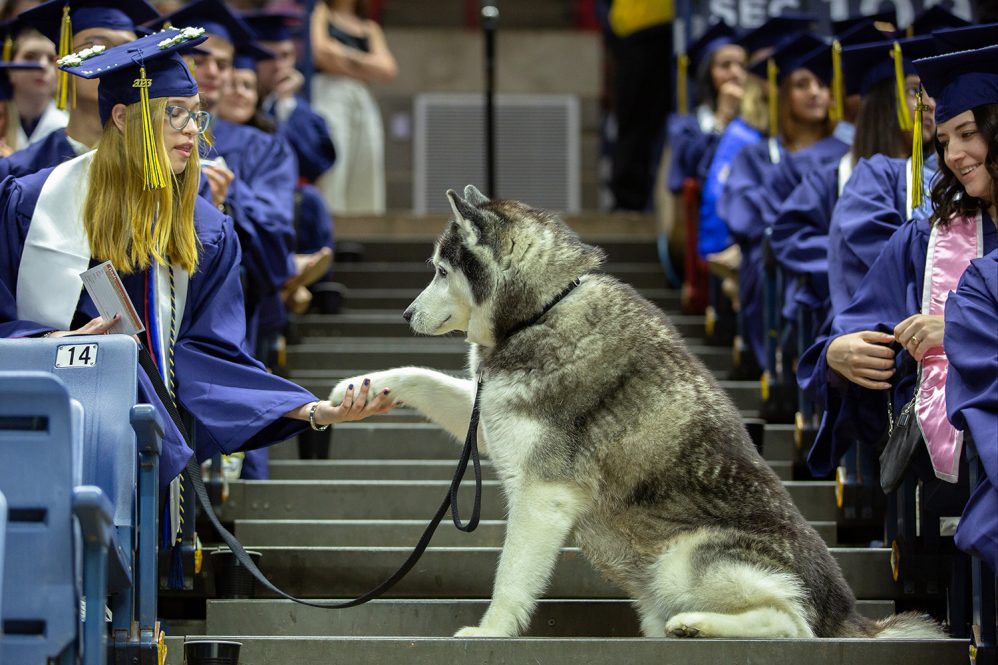When her strong math and science skills were revealed during her high school chemistry class, Joanne Burnham set her sights on a degree in electrical engineering. As the time for college applications approached, Joanne applied to UConn’s School of Engineering through the Early Action process. Currently a commuter student to the Storrs campus, she is in her sophomore year pursuing an Electrical Engineering major and a mathematics minor. Motivated by challenges, she is also considering the addition of a second minor in nanotechnology.
Joanne represents a rising number of young women entering the fields of math, science and engineering. Over the summer leading up to her first semester at UConn, she participated in the BRIDGE program, a six-week intensive preparatory program offered to students from underrepresented populations in engineering who have been admitted to the School of Engineering. The program is offered to women, African Americans, Hispanics, Puerto-Ricans and Native Americans and is fully funded by UConn’s Engineering Diversity Program (EDP). Students attend fundamental course in mathematics, chemistry, physics and statistics intending to strengthen skills that underpin the rigorous engineering curriculum.
“It truly made a difference; when I came to classes I was prepared for the course material and already knew how to handle the work load due to the study sessions we had at BRIDGE,” Joanne explained. “Overseen by Kevin McLaughlin (Director, EDP), it was actually other students who contributed to teaching us in the classrooms. It was extremely challenging and time consuming – we spent hours in study groups pushing through homework assignments.”
However difficult the courses were, she insists that the hard work over the summer paid off. Joanne, who attended a small, private high school, was at first daunted by the large lectures characteristic of freshman year General Education requirements. Soon after, she realized that she knew students in several of her engineering classes. “BRIDGE definitely gave me a big advantage – not only did I solidify successful study techniques, but I also got to meet a lot of engineering students and professors, so it was nice to see familiar faces once the academic year started.” The support network of peers within engineering is due to small classes tailored specifically to each concentration.
With all the preparation that came from the BRIDGE program, Joanne was eager to jump headfirst into her coursework. In fact, at times her advisor has actually advocated that she take fewer classes. “At one point I signed up for two high-level calculus classes within one semester. I wanted to get both of them out of the way at the same time but my advisor didn’t think that was such a great idea,” Joanne laughed. “She suggested I stick to just one calculus class at a time.” In addition to the advice she receives from her academic advisor, Joanne also makes use of the guidance from the “Q-Center” in the Homer Babbidge Library, which stands for Quantative Learning Center and operates “drop-in” tutoring sessions for math, chemistry, physics and statistics. “However, the easiest thing to do is to just ask your classmates. I’ve gotten stuck on assignments before and have reached out to other students and it always turns out that two heads are better than one,” explained Joanne.
Her personal interests lie in the future of 3D televisions and virtualization technology. “My favorite company is SONY®, they have exciting products such as state-of-the-art televisions and display screens.” A fan of cutting-edge design in all forms, her favorite place to study on campus is the Information Technologies Engineering Building (ITEB) which is a five-story, 110,000 sq. ft. architectural masterpiece that was constructed in 2003. While Joanne still has another two years until she will graduates with her bachelor’s degree, she hopes to attend graduate school one day to pursue a career in research and development in electronics.




